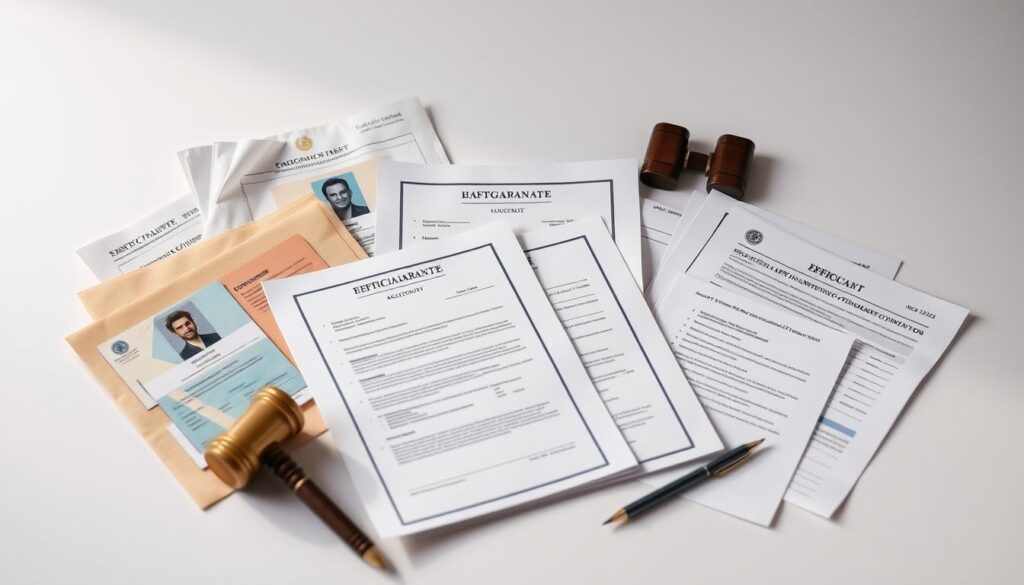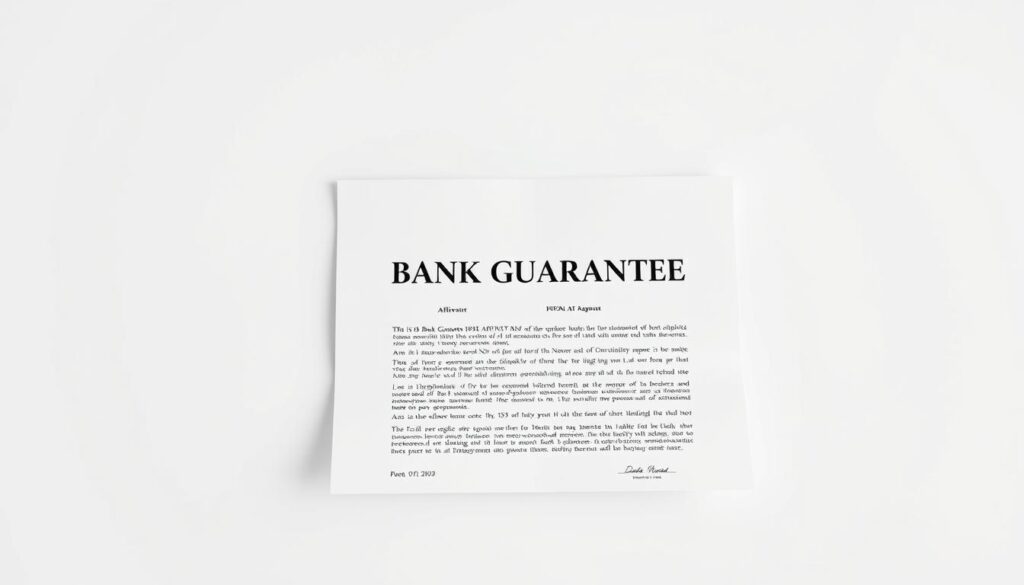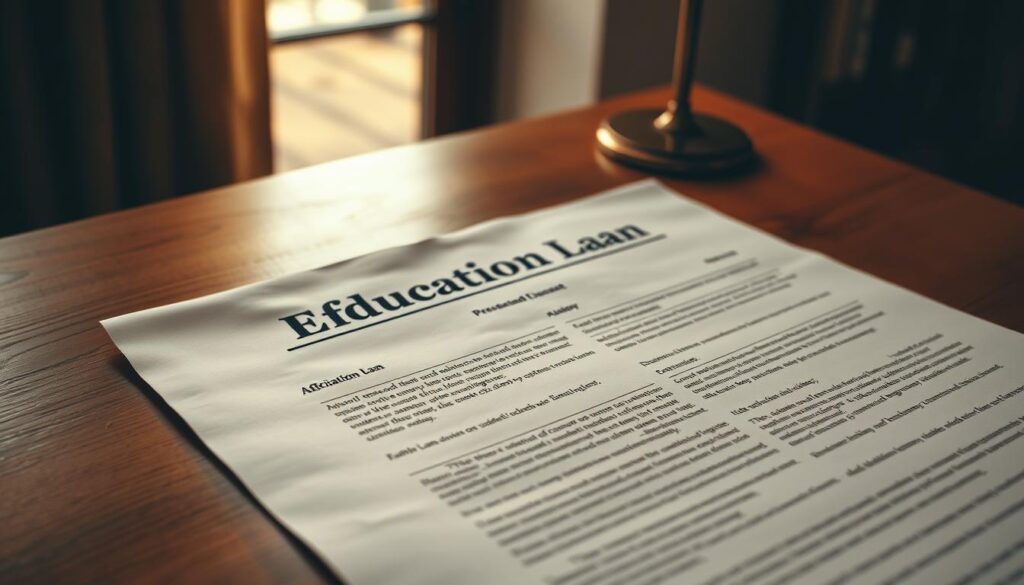What is a Lost Documents Affidavit?
A Lost Documents Affidavit is a sworn legal statement that formally declares a document has been lost, destroyed, or misplaced. This affidavit serves as official confirmation of the loss and is typically required when requesting replacement documents from government agencies, financial institutions, or other organizations.
Primary Functions
- Provides legal proof that a document is no longer in your possession
- Establishes the circumstances of the loss or destruction
- Serves as a formal request for document replacement
- Protects issuing authorities from potential fraud
- Creates a legal record of your attempt to recover documents
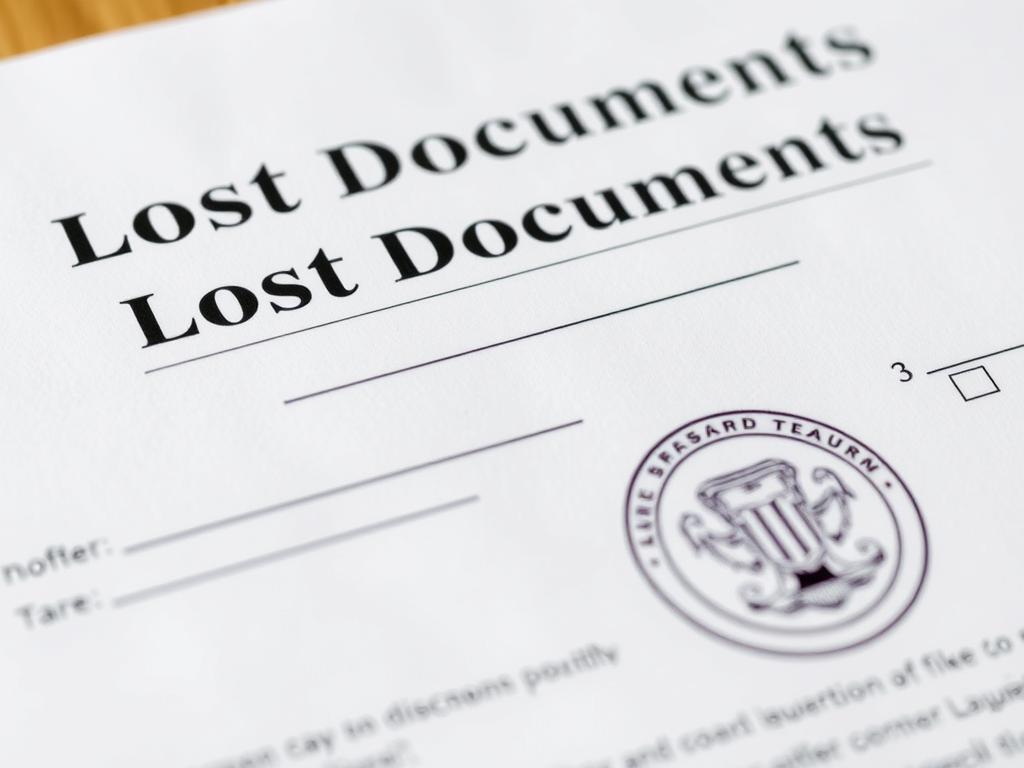
Common Documents That Require an Affidavit When Lost
Personal Documents
- Birth certificates
- Marriage certificates
- Passports
- Social Security cards
- Driver’s licenses
Financial Documents
- Share certificates
- Insurance policies
- Loan agreements
- Bank statements
- Tax documents
Property Documents
- Property deeds
- Vehicle titles
- No Objection Certificates (NOCs)
- Lease agreements
- Building permits
Need Help With Your Lost Documents?
Don’t navigate the replacement process alone. Get professional assistance to ensure your affidavit meets all legal requirements.
Step-by-Step Guide to Drafting a Lost Documents Affidavit
Creating an effective Lost Documents Affidavit requires attention to detail and proper formatting. Follow these steps to ensure your affidavit meets legal standards and effectively serves its purpose.

- Choose the Correct Paper: In many jurisdictions, affidavits must be printed on stamp paper of a specific value. Check your local requirements or consult with a notary about the appropriate paper to use.
- Create a Clear Header: Title the document “AFFIDAVIT OF LOST DOCUMENT” centered at the top of the page. Include the jurisdiction (state/country) where the affidavit is being executed.
- Identify the Affiant: Begin with a statement identifying yourself (the affiant) with your full legal name, age, address, and occupation.
- Make a Declaration: Include a statement that you are making the affidavit voluntarily and of your own free will, with sound mind and understanding.
- Describe the Lost Document: Provide specific details about the lost document, including its type, issuing authority, date of issuance, reference numbers, and any other identifying information.
- Explain the Loss Circumstances: Detail when and how the document was lost or destroyed. Be truthful and specific about the circumstances.
- Describe Recovery Efforts: Outline the steps you’ve taken to locate the document, such as searching your home, contacting relevant authorities, or filing a police report.
- State the Purpose: Clearly state that you are requesting a replacement document and explain why you need it.
- Include a Verification Statement: Add a statement verifying that all information in the affidavit is true to the best of your knowledge.
- Add a Signature Block: Create space for your signature, printed name, and the date of signing.
Required Elements
- Title and jurisdiction information
- Affiant’s personal details
- Clear description of the lost document
- Circumstances of loss
- Statement of truth under oath
- Date and signature
- Notary acknowledgment section

Important: Affidavits are sworn statements, meaning you’re legally bound to tell the truth. False statements in an affidavit can lead to perjury charges, which carry serious penalties including fines and imprisonment.
Sample Lost Documents Affidavit Template
Below is a basic template you can customize for your specific situation. Remember to adapt it according to your local requirements and the type of document you’ve lost.
AFFIDAVIT OF LOST DOCUMENT
[STATE/JURISDICTION]
I, [YOUR FULL NAME], of legal age, [MARITAL STATUS], residing at [YOUR COMPLETE ADDRESS], after being duly sworn in accordance with law, hereby depose and state:
1. That I am the rightful owner/holder of [DOCUMENT TYPE] with [REFERENCE NUMBER/DETAILS] issued by [ISSUING AUTHORITY] on [DATE OF ISSUANCE].
2. That said document was lost/destroyed on or about [APPROXIMATE DATE] under the following circumstances: [DETAILED DESCRIPTION OF HOW THE DOCUMENT WAS LOST OR DESTROYED].
3. That I have made diligent efforts to locate the said document by [DESCRIBE SEARCH EFFORTS], but these efforts have been unsuccessful.
4. That I am executing this affidavit to attest to the truth of the foregoing facts and to support my application for the issuance of a replacement/duplicate of the said document.
5. That I am executing this affidavit to request a replacement for the aforementioned document and to release the issuing authority from any liability arising from the issuance of a replacement document.
IN WITNESS WHEREOF, I have hereunto set my hand this [DAY] day of [MONTH], [YEAR] at [LOCATION].
[YOUR SIGNATURE]
[YOUR PRINTED NAME]
SUBSCRIBED AND SWORN TO before me this [DAY] day of [MONTH], [YEAR] at [LOCATION].
[NOTARY PUBLIC]
Commission expires: [EXPIRATION DATE]

Ready to Create Your Affidavit?
Use our template as a starting point and customize it to your specific needs. For legal certainty, consider professional assistance.
How to Use Your Lost Documents Affidavit
Once you’ve drafted your affidavit, follow these steps to properly execute and submit it for document replacement.
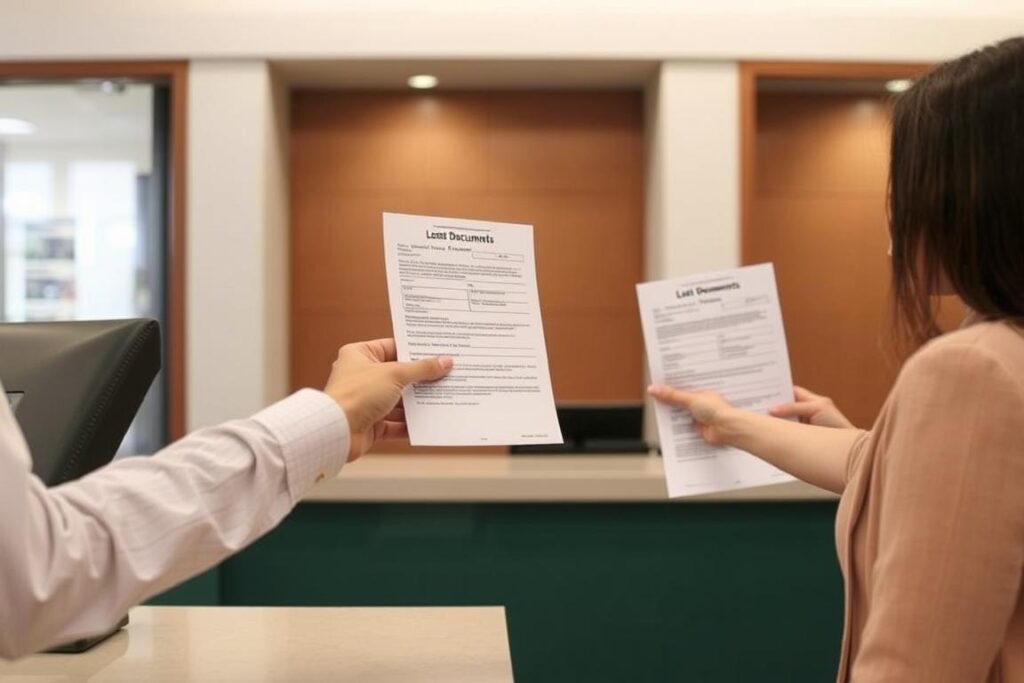
Execution Process
- Notarization: Take your unsigned affidavit to a notary public. You’ll need to sign it in their presence and provide identification.
- Make Copies: Create multiple copies of your notarized affidavit, as you may need to submit it to different authorities.
- Gather Supporting Documents: Collect any supporting documentation that may help your case, such as a police report for stolen documents or proof of identity.
- Submit to Relevant Authority: Submit your affidavit to the appropriate authority that issued the original document.
- Follow Up: Keep track of your application and follow up as needed.
Supporting Documentation
Depending on the type of document you’ve lost, you may need to include additional supporting materials with your affidavit:
| Document Type | Common Supporting Documents | Where to Submit |
| Birth Certificate | ID proof, address proof, original receipt (if available) | Vital Records Office or Registrar’s Office |
| Property Deed | Property tax records, mortgage documents, ID proof | County Recorder’s Office |
| Share Certificate | Account statements, purchase receipts, ID proof | Share Registrar or Transfer Agent |
| Educational Certificates | Student ID, enrollment proof, ID proof | Educational Institution or Examination Board |
“Always keep a copy of your submitted affidavit and any supporting documents for your records. This creates a paper trail that can be invaluable if there are delays or issues with your replacement request.”
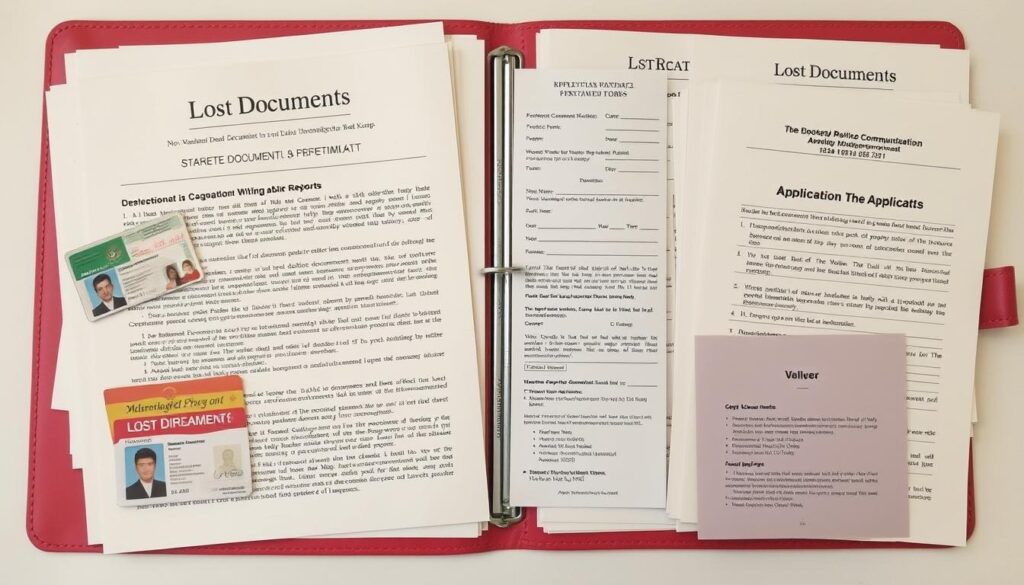
Legal Considerations and Requirements
Understanding the legal aspects of Lost Documents Affidavits can help ensure your document meets all requirements and is accepted by the relevant authorities.
State-Specific Requirements
Affidavit requirements vary by state and country. Some key differences include:
- Stamp paper value requirements (particularly important in India)
- Witness requirements (some jurisdictions require witnesses in addition to notarization)
- Format and content specifications
- Supporting documentation needs
- Filing fees for replacement documents
Always check with your local government offices or consult a legal professional to understand the specific requirements in your jurisdiction.
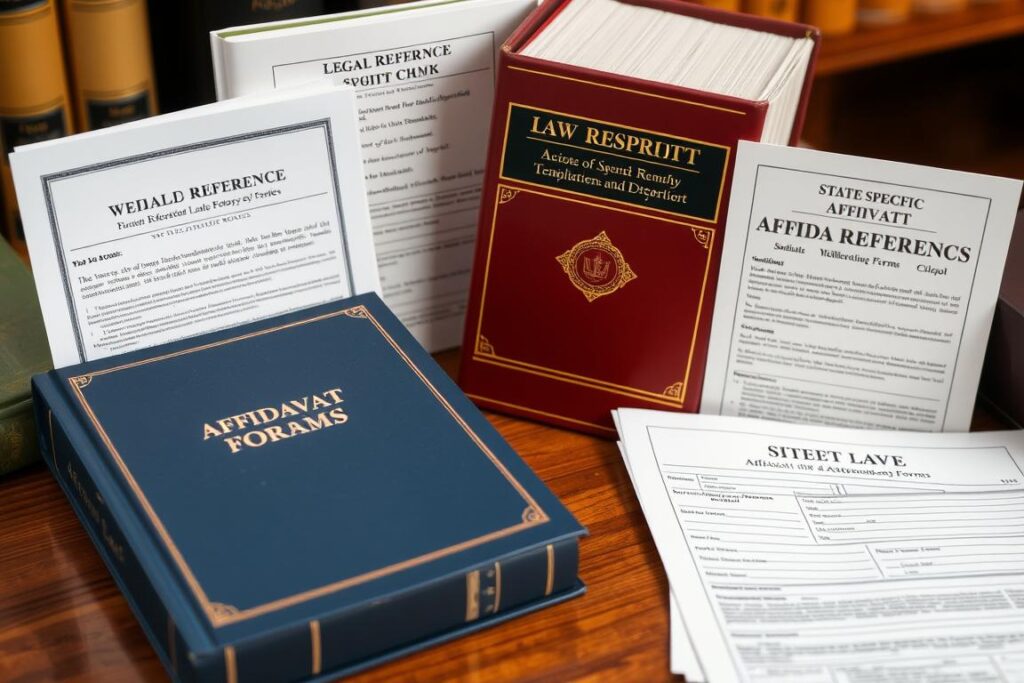
Legal Implications of False Statements
Warning: Making false statements in an affidavit constitutes perjury, which is a criminal offense in most jurisdictions. Penalties may include:
- Criminal charges and potential imprisonment
- Substantial fines
- Damage to your credibility in future legal matters
- Invalidation of any replacement documents obtained
- Additional civil liability if the false statement caused harm to others
Time Limitations
Be aware that some institutions impose time limits for reporting lost documents and requesting replacements. Delays may result in:
- Additional verification requirements
- Higher replacement fees
- More extensive documentation needs
- In some cases, inability to obtain replacements after a certain period
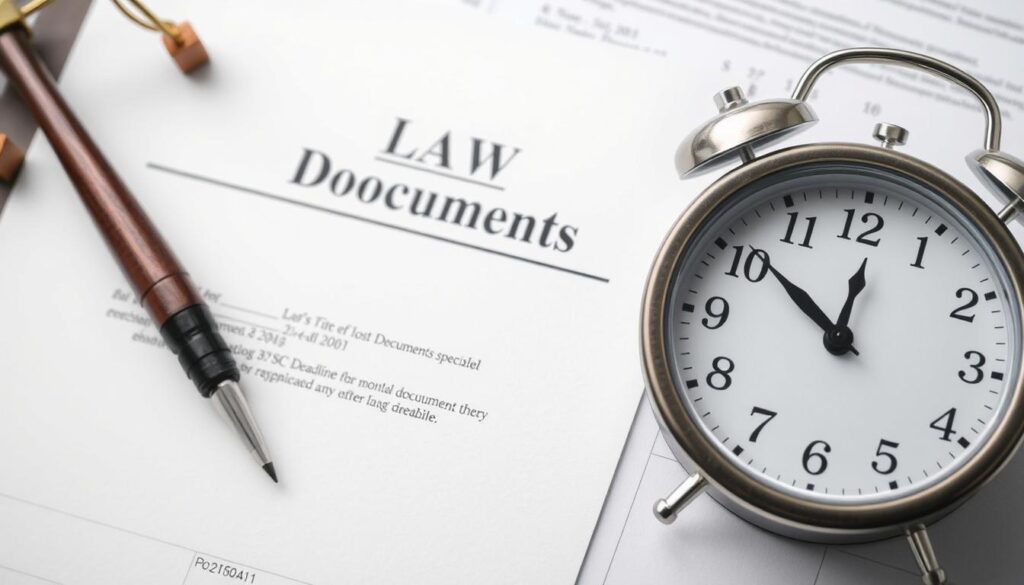
Unsure About Legal Requirements?
Legal requirements for affidavits vary by location and document type. Get professional guidance to ensure compliance.
Frequently Asked Questions
Below are answers to common questions about Lost Documents Affidavits to help you navigate the process more effectively.
Is a notary mandatory for a Lost Documents Affidavit?
Yes, in most jurisdictions, a Lost Documents Affidavit must be notarized to be legally valid. The notarization process verifies your identity and confirms that you willingly signed the document and understood its contents. Without proper notarization, many institutions will not accept the affidavit as a valid legal document.
Can I use a Lost Documents Affidavit internationally?
Using an affidavit internationally often requires additional steps. For international recognition, your affidavit may need to be apostilled or authenticated by your country’s foreign affairs department. Requirements vary by country, so check with both your home country’s authorities and the foreign country’s embassy or consulate for specific guidance.
Do I need to file a police report before creating a Lost Documents Affidavit?
While not always legally required, filing a police report is highly recommended, especially for important identity documents or those that could be used fraudulently. Many institutions require a police report number as part of the replacement process. The police report also provides additional documentation of your loss and demonstrates due diligence.
How long does it take to get a replacement document after submitting an affidavit?
Processing times vary widely depending on the document type and issuing authority. Some replacements may be processed in a few days, while others might take several weeks or even months. Government-issued documents typically take longer than those from private institutions. Always ask about expected processing times when submitting your affidavit and follow up if the stated timeframe passes.
Can someone else create a Lost Documents Affidavit on my behalf?
Generally, the person who lost the document must be the one to execute the affidavit since it’s a personal sworn statement. However, in some cases, a legal representative with power of attorney may be able to execute an affidavit on behalf of someone who is unable to do so (such as a minor or someone who is incapacitated). Consult with a legal professional for guidance in such situations.
Are there fees associated with creating and submitting a Lost Documents Affidavit?
Yes, there are typically several fees involved in the process:
- Notary fees (varies by location, typically – per signature)
- Stamp paper costs (particularly in countries like India)
- Document replacement fees (varies widely by document type)
- Expedited processing fees (if you need the replacement quickly)
Budget for these expenses when planning to replace lost documents.

Conclusion
Losing important documents can be stressful, but a properly executed Lost Documents Affidavit provides a clear path to obtaining replacements. By following the guidelines in this article, you can create an effective affidavit that meets legal requirements and helps you restore your important documentation.
Remember that accuracy and honesty are paramount when creating your affidavit. Take the time to gather all necessary information about the lost document, be truthful about the circumstances of its loss, and follow the proper procedures for notarization and submission.
If you’re uncertain about any aspect of the process, don’t hesitate to consult with a legal professional who can provide guidance specific to your situation and jurisdiction.
Ready to Replace Your Lost Documents?
Start the recovery process today with our comprehensive resources and professional support.


